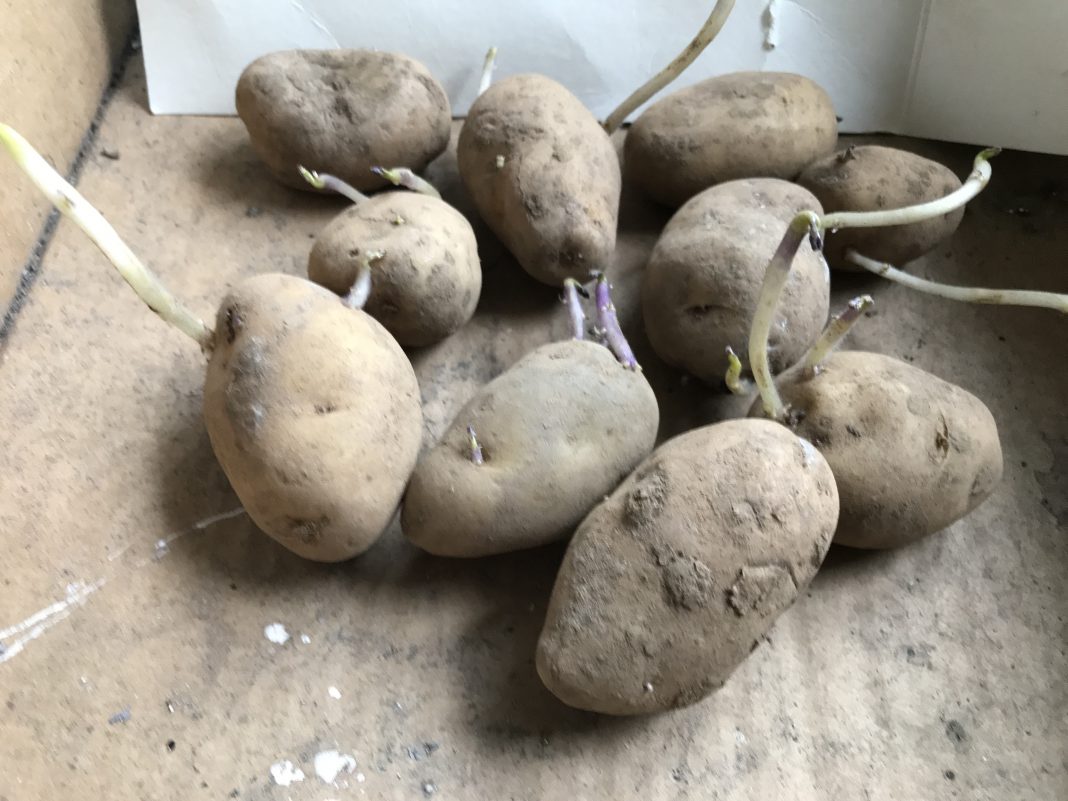If you’ve been thinking about growing your own potatoes, now’s the time. They really are an easy crop to grow once you have bought your seed potatoes, but the question is whether you need to chit them, and this is a question that has been long debated by gardeners.
I believe it to be vital, especially with first early and second early varieties. At this time of year the soil is still quite cold and often wet, therefore chitting could give your crop about two or three weeks’ head start over those that have not been chitted.
Start chitting from late January early February by putting a single layer of potatoes in a shallow tray or egg boxes with the ‘rose end’ (where most of the eyes or dormant buds are) upwards. Place in a light, well-ventilated, cool but frost-free spot to encourage the development of shoots and if you plant the earlier types of potatoes in early March they will become ready to lift from late May.
The traditional planting method is to dig a narrow trench 12cm (5in) deep. The seed tubers are spaced 30cm (12in) apart when the shoots are 2-2.5cm (¾-1in) long. When growth emerges, start the process of ‘earthing up’. Wait until the stems are about 23cm/9in) high and draw soil up to the stems creating a ridge about 15cm (6in) high. As the stems grow, repeat the process. The final height of the ridges will be about 20-30cm (8in-1ft).
Earthing up is a wise protection
Earthing up protects newly emerging foliage from frost damage. It also protects the developing potatoes from light that turns potato tubers green. Green potatoes are poisonous. Keep crops well watered in dry weather and, when planting, do handle the potatoes with care. You do not want to knock off any of those sturdy sprouts!
The vital time is once the tubers start to form. Scrape away some soil to check size, and they may be small to begin with, but they will be so tasty – or leave in the ground slightly longer for a larger size.
There are dozens of different potato varieties and the first earlies variety I plant is Pentland Javelin, a smooth skinned, high yielding potato. Two traditional early varieties to grow are Arran Pilot and Maris Bard. A favourite second early is Maris Peer with a firm texture. I find growing main crop potatoes that spend longer in the soil can be prone to blight and can also be eaten by slugs.
Image Credits: Dennis Leeds-George .



